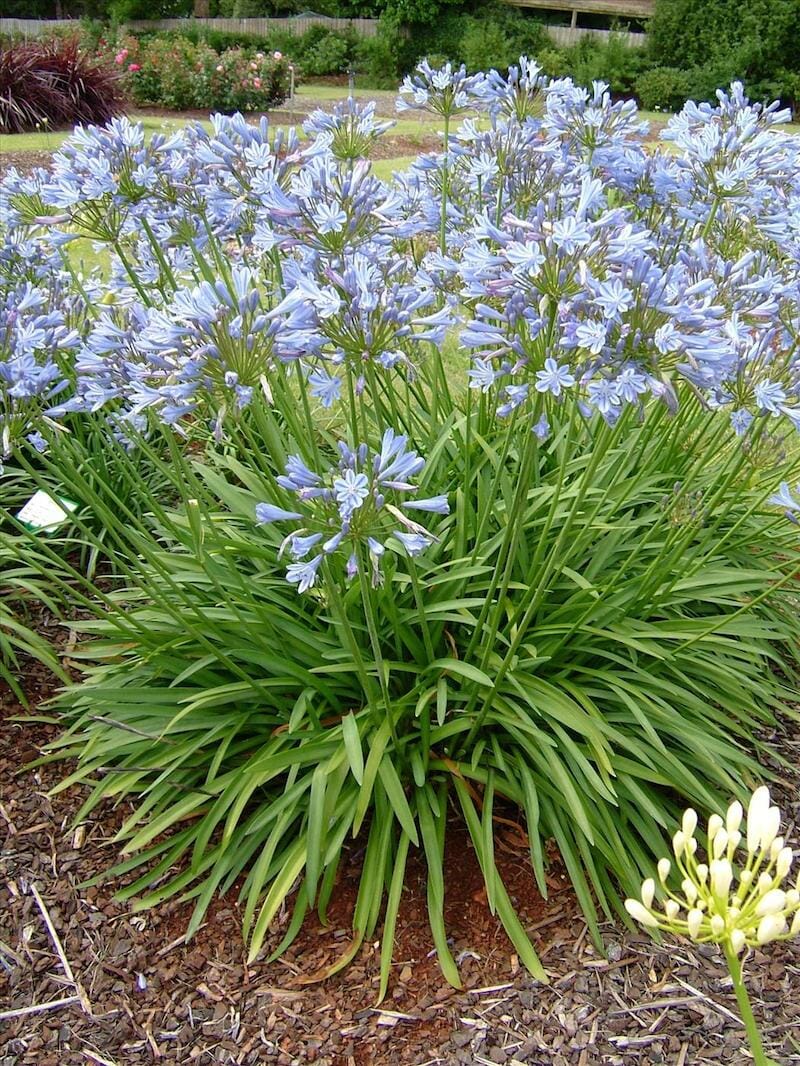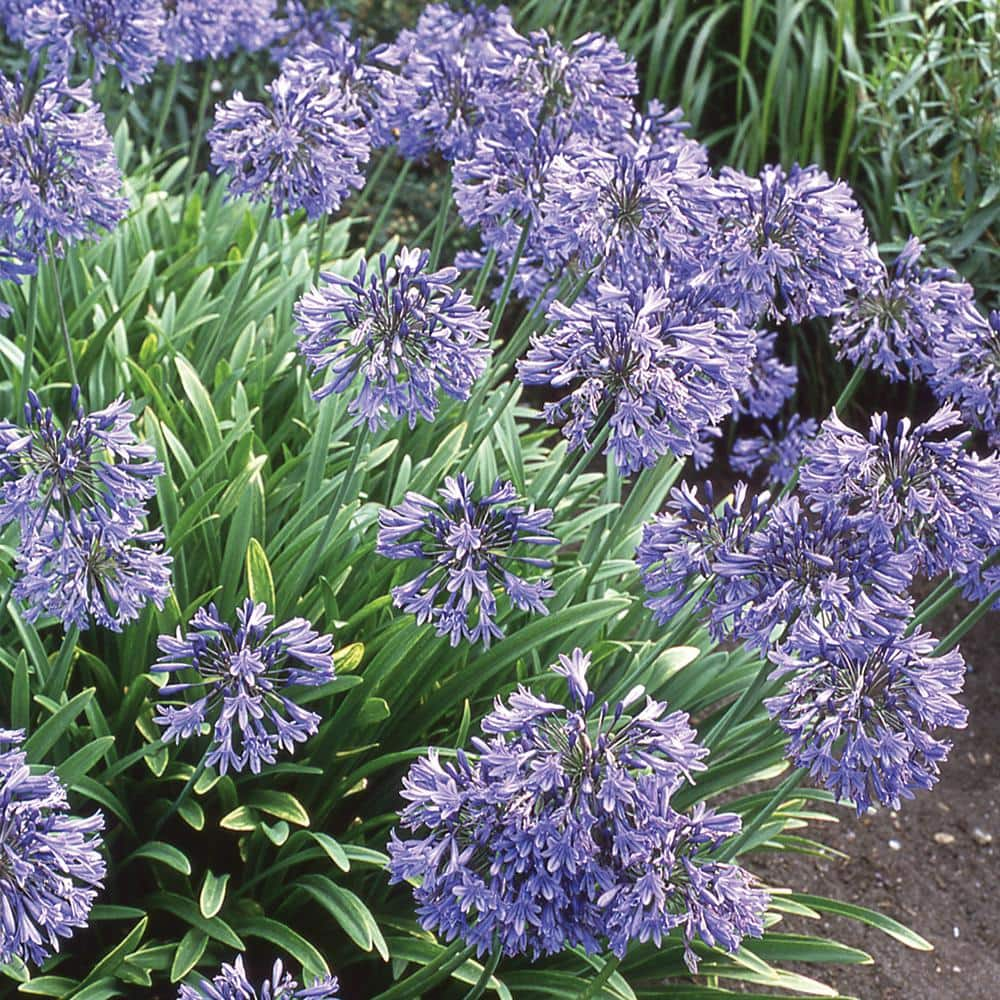Agapanthus Companion Plants: Perfect Pairings for Your Garden
Wiki Article
Grasping the Art of Agapanthus Treatment: Important Steps for Healthy Development and Vibrant Blooms
In the realm of gardening, the growing of agapanthus stands as a satisfying undertaking for those who look for to nurture these classy blooming plants. From choosing the right selection to mastering trimming methods, the journey in the direction of growing flourishing agapanthus plants is diverse and holds the essential to opening the full possibility of these agricultural gems.
Choosing the Right Agapanthus Selection

When selecting the right Agapanthus selection for your yard, think about aspects such as climate viability, bloom color, and growth routine. Furthermore, take into consideration the environment in your area to ensure the Agapanthus variety you choose can thrive in your certain conditions. Comprehending the growth routine of different Agapanthus selections is essential for proper placement within your garden.
Ideal Planting Conditions
Taking into consideration the optimal ecological needs is important for successful Agapanthus growing. Agapanthus grows in well-draining dirt with a somewhat acidic to neutral pH level. When planting, choose an area that obtains complete sunlight to partial color. In hotter climates, offering some mid-day color can protect against scorching of the leaves. Agapanthus plants are sensitive to cold temperature levels and should be protected from frost during winter season.To make certain healthy and balanced development and vivid blooms, plant Agapanthus light bulbs at a depth of about 2-4 inches and space them 8-12 inches apart. Including raw material, such as compost, to the soil can boost drain and fertility, promoting robust root growth. Mulching around the base of the plants helps preserve dampness and suppresses weed development. Normal watering is essential, particularly throughout the expanding period, to keep the dirt constantly wet but not saturated.
Watering and Fertilizing Tips
Keeping correct dampness levels and providing crucial nutrients are vital elements in the care routine for Agapanthus plants. When it comes to watering Agapanthus, it is critical to strike an equilibrium. These plants choose consistently moist soil yet are vulnerable to root rot if overwatered.Feeding Agapanthus is important for advertising healthy growth and respected blooms. Apply a balanced fertilizer, such as a 10-10-10 formula, in the very early spring as brand-new development arises. Repeat this application every 6-8 weeks throughout the growing season. Stay clear of extreme fertilizing, as it can result in rich foliage at the cost of blooms. Constantly adhere to the supplier's guidelines for appropriate dilution and application approaches. By complying with these watering and fertilizing pointers, you can ensure your Agapanthus plants flourish and generate lively, durable flowers.
Pruning Methods for Agapanthus
Pruning Agapanthus plants at the suitable times and with proper techniques is important for preserving their health and advertising optimum development and flowering. The optimal time to prune Agapanthus is in late wintertime or early spring before new growth emerges.For flowered stems, wait until the blooms have perished and afterwards trim them back to the base. This not only cleans up the plant's appearance however also motivates the growth of brand-new flower buds. Deadheading spent flowers can also redirect the plant's energy into producing even more flowers instead than setting seeds. However, if you desire to my website collect seeds for propagation, leave some blossoms to mature and dry on the plant.
Bear in mind to use tidy, sharp devices to make precise cuts and lower the risk of introducing diseases. Agapanthus. Regular pruning will certainly assist maintain your Agapanthus looking neat and healthy while guaranteeing an abundant screen of gorgeous blossoms
Handling Typical Bugs and Illness
After making certain correct pruning techniques for Agapanthus, it is important click here for more to resolve typical bugs and illness that can affect the health and wellness and vigor of these plants. Agapanthus plants are generally durable yet can still succumb to particular issues. One usual parasite that affects Agapanthus is the Agapanthus gall midget. This little, orange fly lays its eggs in the vegetation, resulting in distorted development and flower buds that fall short to open. To fight this insect, trim and ruin any damaged plant components and consider utilizing insecticidal soap.Another usual issue is fungal fallen leave place, which offers as dark sores on the fallen leaves. To avoid fungal diseases, guarantee excellent air visit site flow around the plants, avoid above watering, and get rid of any kind of infected fallen leaves promptly. In addition, Agapanthus plants can struggle with root rot if they are planted in poorly draining pipes dirt. To stop this, plant Agapanthus in well-draining soil and prevent overwatering. By being watchful and taking punctual activity against conditions and pests, you can aid your Agapanthus plants thrive and generate dynamic blooms.

Verdict
To conclude, mastering the art of agapanthus treatment entails picking the ideal variety, giving optimal planting problems, appropriate watering and feeding, ideal pruning methods, and attending to typical insects and diseases. By complying with these crucial steps, you can guarantee healthy growth and vivid flowers for your agapanthus plants. Keep in mind to regularly keep an eye on and preserve your plants to advertise their overall health and durability.To make certain healthy and balanced growth and vibrant flowers, plant Agapanthus bulbs at a deepness of about 2-4 inches and room them 8-12 inches apart. By complying with these watering and feeding pointers, you can ensure your Agapanthus plants flourish and produce dynamic, durable blossoms.
One common insect that influences Agapanthus is the Agapanthus gall midge. Furthermore, Agapanthus plants can endure from root rot if they are planted in poorly draining pipes dirt. By following these essential steps, you can make sure healthy growth and dynamic blossoms for your agapanthus plants.
Report this wiki page